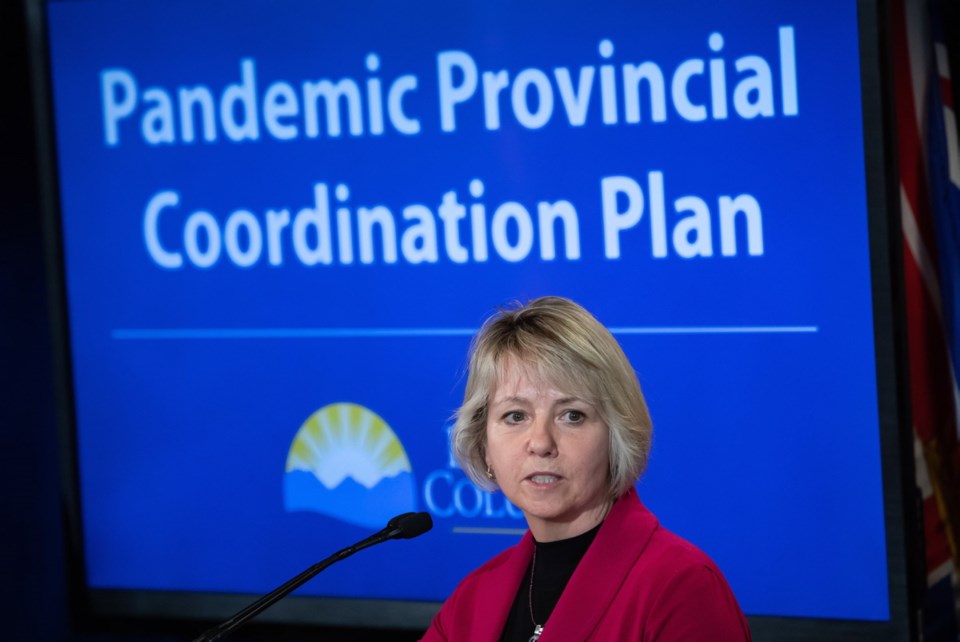British Columbia’s ranking health officials are balancing between reassuring people they’ll quite likely make it through the COVID-19 outbreak, while readying measures that sound quite frightening in order to make sure they do.
So far they’re doing a good job.
An update Friday outlined B.C.’s stance of cautious optimism up front and preparation for grimmer scenarios behind the scenes.
The scary word pandemic is now in common use. The use of emergency measures is on the table. They haven’t been activated yet, but will be if they’re deemed needed.
There are plans to redeploy health workers regionally and provincially as the need arises. There are a host of other measures being contemplated about closures and curtailments of routine social contacts that can’t help but leave a sense of alarm.
But there are important aspects that balance that off, or at least downgrade alarm to concern.B.C.’s analysis of Chinese data is that COVID-19 is less severe than SARS or MERS, earlier outbreaks of similar viruses.
Children experience almost entirely mild illness, says the government analysis.
The government also notes the real potential of warmer spring weather reducing the spread.
B.C. got an early jump on dealing with the coronavirus. The highly-regarded B.C. Centre for Disease Control developed a test for the virus well ahead of many other jurisdictions. They finished it within a week or so of China providing the genetic sequencing data.
The number of tests passed the 2,000 mark Friday and will jump much higher as more labs will soon be handling more tests.
The B.C. Centre for Disease Control itself is a reassuring presence. It did outstanding work in the SARS crisis of 2003 and seems to be upholding its reputation. Also reassuring is the fact that B.C.’s chief public health officer was tested intensely by that earlier pandemic and passed with flying colours.
Dr. Bonnie Henry was associate medical health officer in Toronto when SARS hit there hard. In a January interview with TV Ontario, she recalled the very early days, when she made the decision to close a hospital, after determining how SARS spread. Admissions were cut off, and infection controls were ramped up for those who stayed.
“Gloves are normal. Masks are normal. But every time there’s a crisis, we’re reminded again that it’s human nature to slip, to be complacent.” Henry, who also helped fight the H1N1 flu outbreak in 2009, noted that public health in Canada is much better organized now than then.
She was front and centre Friday as Premier John Horgan and Health Minister Adrian Dix released an updated pandemic coordination plan. It’s focused at the moment on delaying the onset of widespread community transmission for as long as possible.
But if community transmission takes hold during a sustained three to four month outbreak, an assortment of prevention measures would escalate, using emergency measures if necessary. That would include still more testing, government continuity plans to deal with high absence rates.
Health care workers are a particular focus. There are plans to have health authorities’ emergency operation committees decide on discharging low-risk patients, deferring surgeries and creating isolation units. Also under consideration are restrictions on visitors to all care settings.
Apart from the health sector, there are plans to ensure general business continuity as well.
Horgan was non-committal this week when asked about hoarding. The plan calls for grocery chains to ensure supplies for daily living and discourage inappropriate panic buying.
A specific protocol is in the works for arriving cruise ships.
The plan also emphasizes the need for employees to stay home if they have symptoms. That entails encouraging people to work from home or isolate themselves in some fashion if need be.
The number of cases doubled over the week to 21, as of Friday. That is what prompted the full-scale release of the pandemic plan. In three words, it’s “delay, contain, prepare.”
Ordinary life could change over the next few months, depending on how deep into the plan the government goes. But there was a heartening phrase during a briefing: “It’s not the end of the world.”



